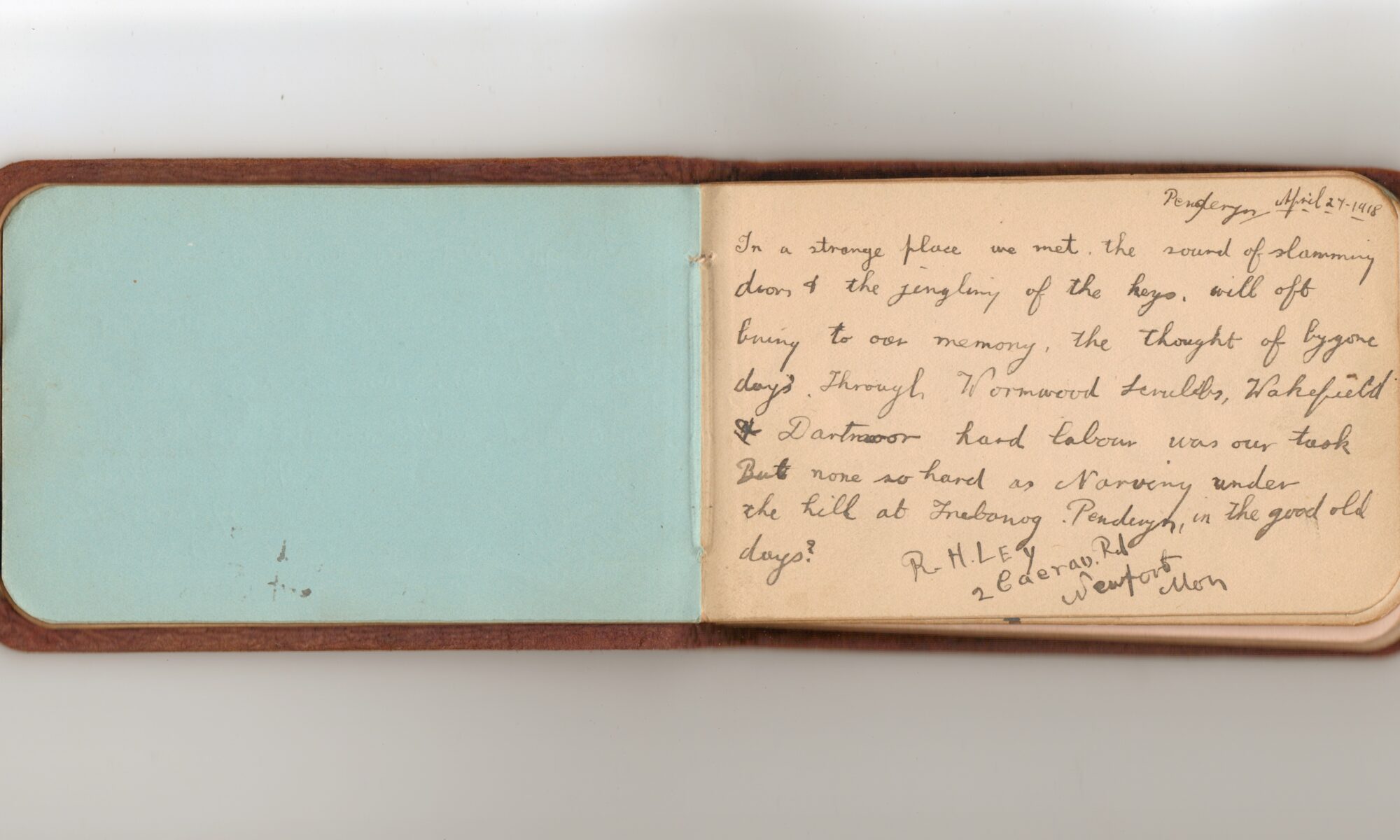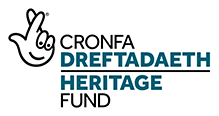Turn out your Pockets/Kindle the Flame Online Community Exhibition Day 6
Here is the next installment of ‘Turn out your Pockets/Kindle the Flame’, an online exhibition of the stories and ‘treasures’ from our social media community.
If you would like to get involved, please email [email protected] with your stories and pictures.
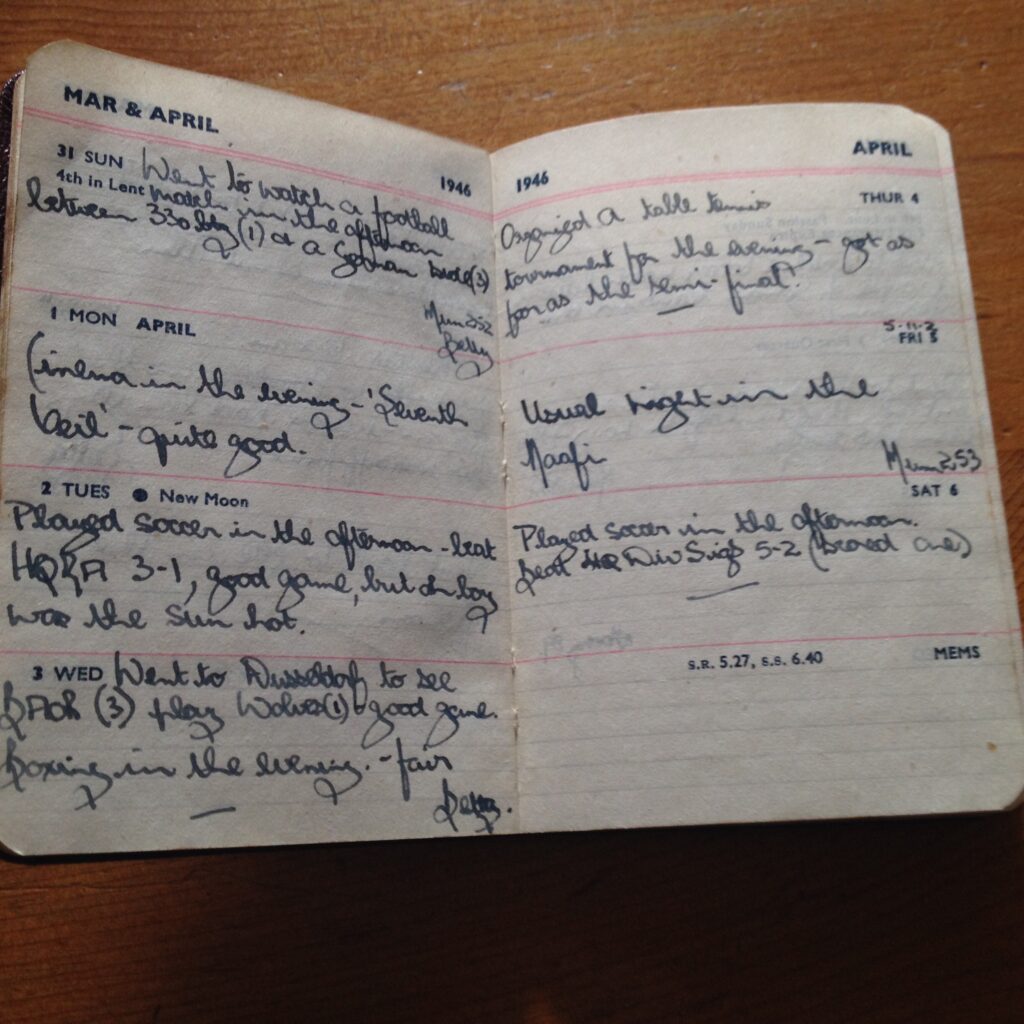
‘During the house clearance of my parents’s home I came across a lot of photographs that I hadn’t seen before. Dad also kept diaries, so after browsing through everything I was able to link a diary for 1946 to a football team photo and the football programme. I have also included some snippets from a 1945 diary which I am in the middle of transcribing.
Dad didn’t talk about his time in the army so it is just a bit of a glimpse of his army life. Off duty he enjoyed trips to the cinema and theatre and enjoyed a lot of sport. Don’t know why but that surprised me!
Diary 1945:
January 9th
In Embourg ,5 miles from Lieg, known as Buzz Bomb Alley. Plenty of V -1s about
February 19th
Saw Monty when he passed by today.
March 1st
Good news from American front, Roermond captured. Americans still racing on, now a mile from Düsseldorf.
April 16th
Expecting to go on leave but date keeps changing.
April 23rd
On leave, back home in Cardiff
May 1st
HITLER REPORTED DEAD
May 3rd
Heading back to Gennup. Lights all blazing in Lille as we passed through, celebrating the fall of Berlin.
May 4th
Unconditional surrender announced of all forces in N.W. Germany to 21 army g.p
May 5th
Passed through Hamburg which is almost a shambles. Saw hundreds of Germans tramping along to give themselves up.
May 8th
Declared VE Day. Great celebrations everywhere. PM and King spoke on radio. No parades today.Party on in night, bags of beer floating round
May 9th
Another regimental holiday.
Next few months dad seems to be doing clerical work, sorting out pay.
July 26th
General Election Result . Labour in with vast majority.
August 6th
Atomic bomb dropped on Japan.
August. 9th
Russia declared war on Japan
August 10th
Leave cancelled for all
R Signals eligible for Far East, which includes me.
August 14th
Attlee announced on midnight news that Japan had accepted Allied Terms ———THE WAR WAS OVER.
August 15th
V J Day Public Holiday. Opening of Parliament and King’s Speech.
On leave in Cardiff 11.9. —-27.9
Back in Germany
Oct 4th
Start German classes
1946:
Jan 7th
Left for the Rhine Army College
Feb 7th
Moved to Transit Camp
Seems to be a case of waiting for a departure date now.
April 2nd
Played soccer in the afternoon ————— beat HQRA 3 – 1, good game, but oh boy was the sun hot.
So last few days now, watching football matches, boxing , table tennis.
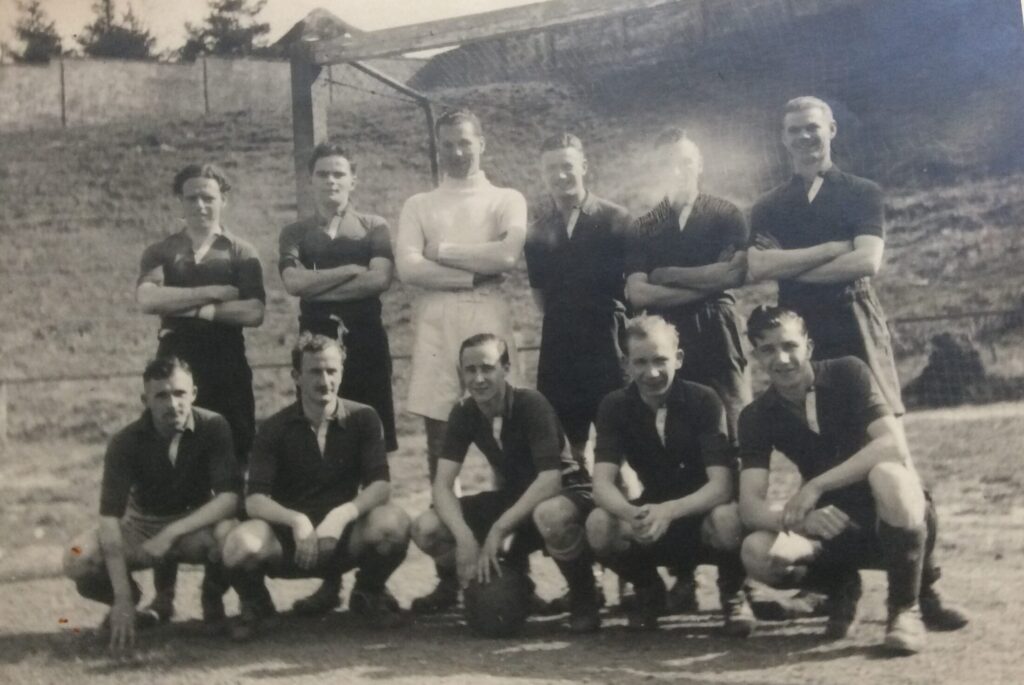
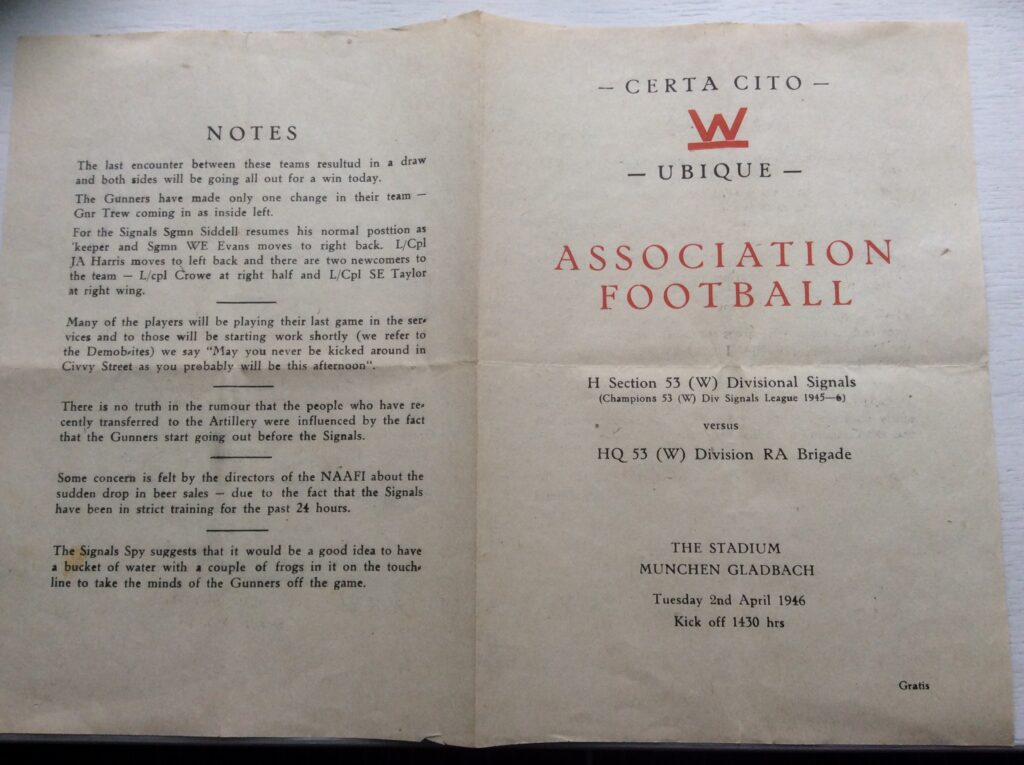
So last few days now, watching football matches, boxing , table tennis.
April 8th
Last trip to cinema in the evening but only stayed an hour as the film was deadly.
April 15th
Signed Release Book
April 16th
Left Div. 9.30 for 121 Transit Camp, left about 2pm
April 20th
Arrived home 7.30 am Easter Saturday. Went to Arms Park in afternoon,
Baa Baas beat Cardiff 10 – 9
Dad went off to Scotland shortly after to meet my mother’s family .
Dad had met mum sometime in 1945 in Brussels. She was in the ATS and a telephonist .
It was all down to dad’s truck breaking down and he had to spend a couple of days in Brussels, I think they met at a dance .
Dad didn’t write in his diary after May 5th 1946′.
Liz Hole
Turn out your Pockets/Kindle the Flame Online Community Exhibition Day 5
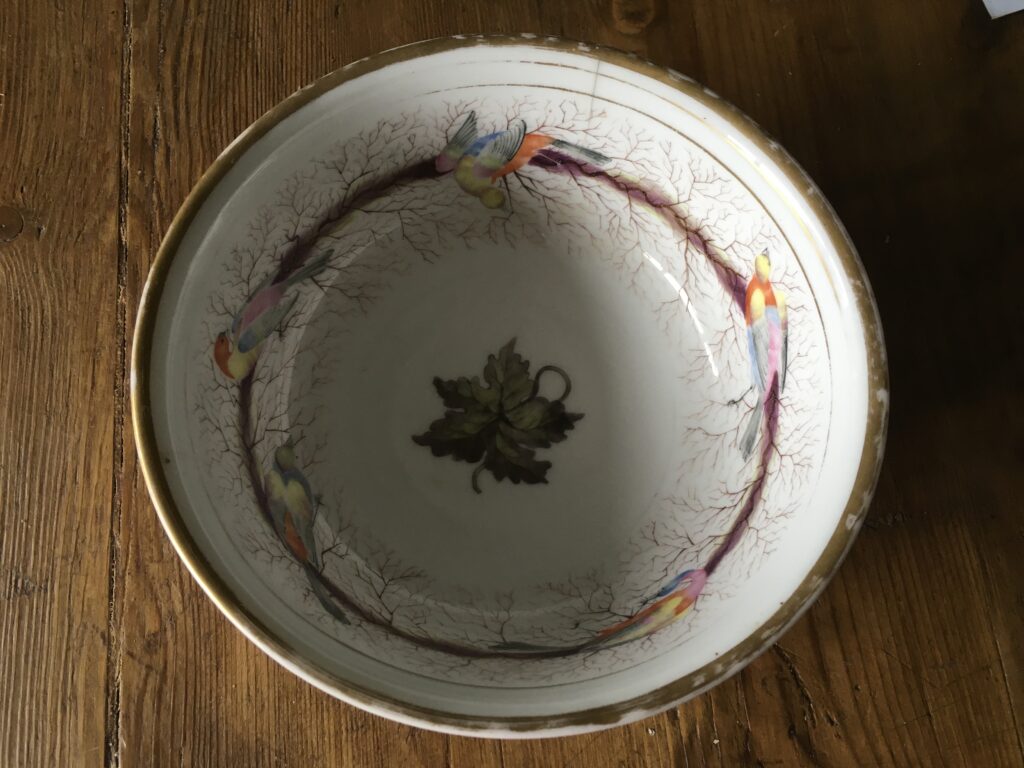
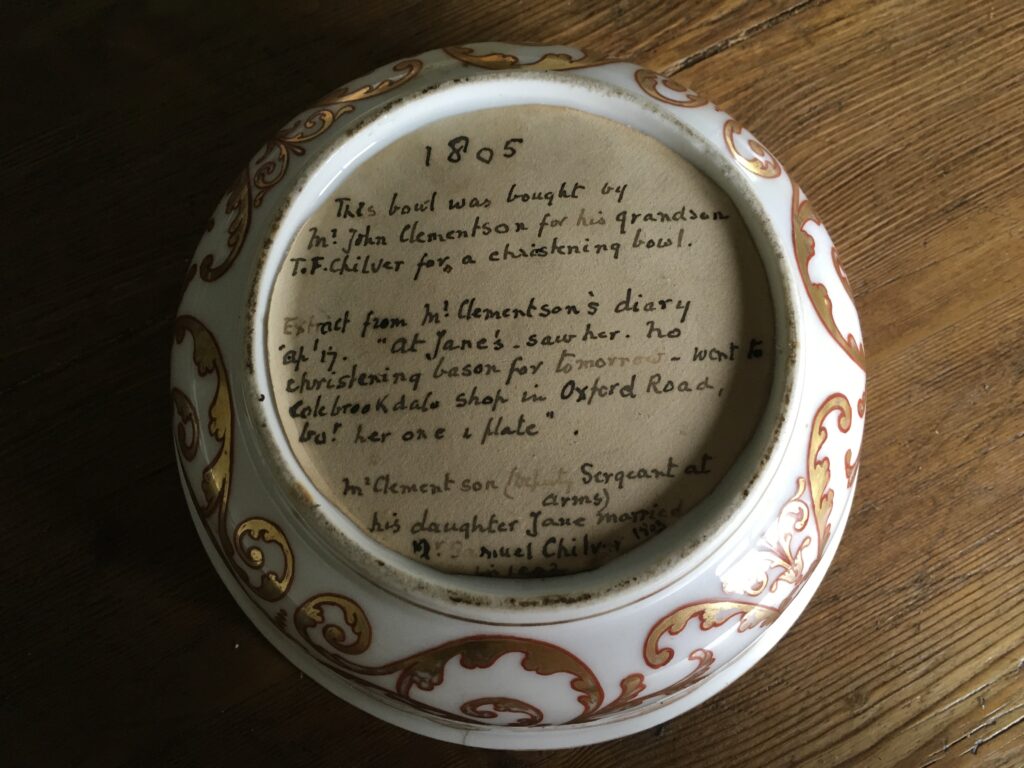
‘This bowl was given by my mother’s first cousin Roland Lumby to my son John Simon Chilver Donovan, being the eldest son in my family and a direct descendant of the Chilver family. I currently ‘curate’ the bowl on John’s behalf.
The pasted-on paper on the base reads:
1805
This bowl was bought by Mr John Clementson for his grandson T. F. Chilver for
a christening bowl.
Extract from Mr Clementson’s diary Apl 17.
“At Jane’s – saw her. No christening bason for tomorrow – went to Colebrookdale shop in Oxford Road, bot her one i [?] plate”.
Mr Clementson (Deputy Sergeant at Arms)
His daughter Jane married Mr Samuel Chilver
1803
The following is the relevant page from my Ancestry.co.uk research. Roland Lumby, who gave my son John the bowl, also passed on to me a very comprehensive family tree to the Ranking / Blake Humfrey side of the family (see the bottom branches of the tree). He was a grandson of Harvey Ranking.
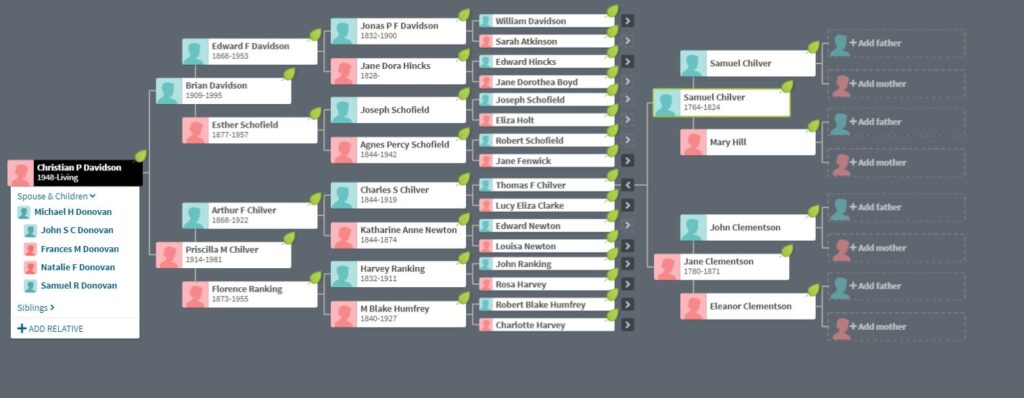
Thomas Farquhar Chilver (Born 11th April 1805 in Westminster, London, died in 1875 in Sussex) was my, Christian Donovan (Davidson)’s great-great Grandfather. He had five sisters. A Fellow of the Royal College of Surgeons, he was, according to census results, living in Westminster, St James in both 1851 and 1861. His wife, Lucy Eliza (née Clarke) was one of four people killed in a train crash near Streatham, London in 1863. She had been travelling on the train with Thomas returning to London from Brighton.
Thomas’s father, Samuel Chilver (1764-1824) was also a Surgeon, pupil of Sir Walter Farquhar (cf. List of Fellows & Members of the Royal College of Surgeons of England). He practised at 14 New Burlington Street in London.
Thomas’s mother, Jane Clementson (1780-1871) was the daughter of John Clementson, who presented the ‘bason’ [sic].
John Clementson was Deputy Serjeant at Arms at the House of Commons between 1770 and 1804. He kept a diary whilst there and this is preserved in the Houses of Parliament archive.
The Serjeant-at-Arms of the House of Commons is responsible for security matters concerning the House of Commons. The Serjeant, whilst in the Commons overseeing proceedings, can also escort MPs out of the chamber by order of the Speaker of the House.
John Clementson kept a family diary as well as his ‘official’ work one.
He was married to Eleanor Clementson.
The bowl came from the ‘Colebrookdale shop on Oxford Road’. I can find no record of a shop of this name, but it might possibly have been in Oxford Street, London. Colebrookdale or Coalbrookdale was another name for Coalport Porcelain, based in Shropshire. This company was founded in 1795, so the family Christening basin is a relatively early piece oftheir work. Unfortunately because of the paper pasted on the bottom, I cannot see the maker’s mark, but there may well not have been one.
1805, the year of Thomas’s Christening was a turbulent one for Britain. George III was King, William Pitt the Younger was Prime Minister. The Napoleonic Wars and the Anglo-Spanish War were ongoing. Six months after Thomas’s birth, Nelson defeated the French and Spanish fleets at the Battle of Trafalgar. He was killed in that battle.
Wikipedia lists the highlights of the year as:
* 20 January – London Docks open.
*21 February – Charles Manners-Sutton confirmed as Archbishop of Canterbury.
*18 April – Ordnance Survey begins systematic publication of its General Survey of England and Wales (“Old Series”) maps to a scale of one inch to the mile (1:63,360) with those for Essex
*4 June – the first Trooping the Colour ceremony at the Horse Guards Parade in London.
*3 August – the annual cricket match between Eton College and Harrow School is played for the first time.
*21 October – Napoleonic Wars: Battle of Trafalgar – British naval fleet led by Admiral Horatio Nelson defeats a combined French and Spanish fleet off the coast of Spain. Admiral Nelson is fatally shot.
*6 November – news of the victory at Trafalgar and Nelson’s death reaches London.
*26 November – the Ellesmere Canal’s Pontcysyllte Aqueduct is opened in Wales, the tallest and longest in Britain.
Further information:
1. John Clementson
John Clementson was Deputy Serjeant at Arms from 1770 to 1804. In this diary he recorded his daily duties and the proceedings of the House of Commons. The account of his tasks was very detailed, for example in the first entry on 2 April 1770 he describes, “When the Chairman […] begins to put the Question, you put your hand upon the lock of the Door, and no Member can after that come in or out”. Clementson performed his work with enthusiasm and efficiency, and records suggest that he was seventy years old when he finally retired. In recognition of his faithful services, the House unanimously voted to make provision for Clementson during his retirement. He bequeathed his office to his son on 5 May 1804. Source: https://www.parliament.uk/about/living-heritage/evolutionofparliament/parliamentwork/offices-and-ceremonies/collections/serjeant-at-arms/john-clementsons-diary/
Note: there is some confusion as to John Clementson’s dates of birth and death, because his son, also called John Clementson, later became a Deputy Serjeant at Arms.
In the Gentleman’s Magazine for 1805 (couldn’t find the exact date) I found this report:
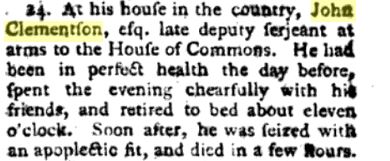
2. Coalport porcelain
Source: The Editors of Encyclopaedia Britannica
Alternative Title: Colebrookdale porcelain
Coalport porcelain, ware from the porcelain factory in Shropshire, England, founded by John Rose in 1795. “Colebrookdale Porcelain” was used sometimes as a trade description and a mark because the factory was located at Coalbrookdale. Coalport’s glazed bone china was in great demand and improved greatly in quality about 1820 with the refinement of a hard, white porcelain. A Willow pattern and transfer prints were characteristic until a growing tendency toward richness of style was confirmed by the introduction of a maroon ground in 1821. John Rose II, succeeding in 1828, lavishly imitated the French Sèvres style as well as the styles of Chelsea and Derby, with versions of their respective turquoise, claret, and mazarine blue. Gilded and molded ornamental ware with mass incrustations of flowers,
after Meissen, was frequent. By 1830 Coalport was among the leading potteries of England.
In 1849 a fine Sèvres pink (imitative rose Pompadour and called rose du Barry) attracted many orders; plausible imitations of German Meissen or copies of Sèvres and Chelsea with their marks were numerous. Some eggshell porcelain was made beginning in 1845. In the 1860s Coalport turned to domestic ware and the Victorian decoration of earlier biscuit (unglazed) china. Interest in fine porcelain revived in the 1880s, and production of elaborate pieces has continued to the present.
3. Coalport Porcelain
source: https://antique-marks.com/coalport-marks.html
Very early Coalport porcelain was unmarked, (c1805 and before) and in reality marks were rarely used before 1820. However, the porcelain collector should note that early CoalBrook Dale marks are extremely rare and very collectible’.
Christian Donovan
Turn out your Pockets/Kindle the Flame Online Community Exhibition Day 4
Here is today’s locally made object for the ‘Turn out your Pockets/Kindle the Flame Community Exhibition.
If you have a story to share, email us at [email protected]
‘This is a tilt-top leather table depicting Rhiannon on top of Arberth (Narberth Mound) in the medieval Welsh tale of Pwyll. It’s based on the Victorian illustration that accompanied ‘Pwyll Prince of Dyved’ in Lady Charlotte Guest’s lavish and pioneering translation known as The Mabinogion. It was the work of the artist John Cleal and includes the relevant text in Welsh on the front and English translation on the reverse. I’d asked John (who had, with his wife Lel, founded Workshop Wales in Lower Town, Fishguard) to make this Mabinogi table for me in 1989. This was the year that my biography of Lady Charlotte Guest was first published (co-authored with Revel Guest, Lady Charlotte’s great-granddaughter). It reminds me of the dramatic scene in this tale set in Pembrokeshire – where I live – but it also reflects the sensitivity and skills that were so apparent in John Cleal’s work’.
*(An article by Shan Morgain on ‘Rhiannon – heroine of Pembrokeshire’ that includes a discussion of this table appeared in Pembrokeshire Life , May 2017, pp. 34-6).
Angela V. John.
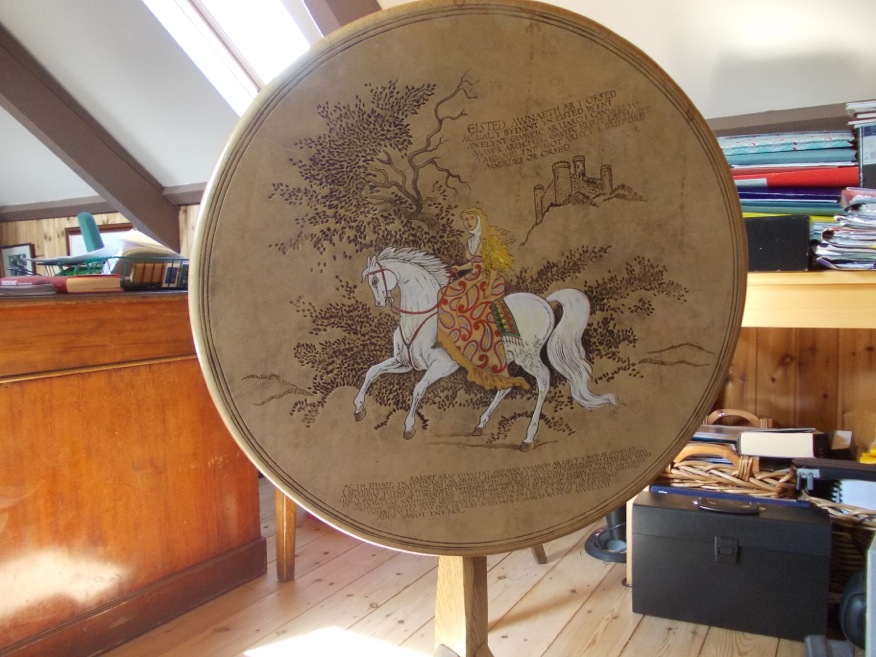
Turn out your Pockets/Kindle the Flame Online Community Exhibition Day 3
Here is the next object for our online ‘Turn out your Pockets/Kindle the Flame’ exhibition. This little pot, discovered during lockdown, is a reminder of how we are always connected across time and place.
Get involved by sending a picture and description of your own object (nothing is too small or insignificant) to [email protected]
‘It seems more than a mere coincidence that while working to restore our terraced Victorian garden every day during Covid19 lockdown I should unearth, amongst the rubbish of old metal chains, long-lost rusted garden tools and a loads of bed springs, the remains of this little pot.
The clear description of its contents made it relatively simple to research its history. As a young man Giles Roberts (1766-1834) set himself up as a chemist in Bridport in Dorset, with a licence to draw blood, extract teeth and cauterise wounds. After gaining qualifications at Guy’s and St Thomas hospitals in London he set up a practice, and was elected Medical Attendant to the poor in Bridport in 1807, campaigning for better hygiene and, during a cholera epidemic distributing, at his own expense, a pamphlet on healthy living.
The recipe for ‘Poor Man’s Friend’ ointment was a trade secret, and was only rediscovered in the former shop quite recently. Bridport Museum bought it for £480.00 in 2003 along with other Dr Roberts ephemera. Apparently it consisted mainly of lard and beeswax, salts of mercury and zinc oxide –it would have been effective in the treatment of eczema and minor skin infections.
After his death in 1834, Dr Roberts’ pharmacy continued to manufacture the ointment contained in this pot, under the names of Thomas Beach and John Barnicott until 1903.This size pot (4cm tall) was priced at 1/1½ It seems to be an early edition, compared with photographs online, and since the house and garden in Fore Street Kingsbridge was developed on open land in 1861 it is probably from mid- to late-Victorian times.
Not a huge or valuable treasure, but its associations with our developing garden restoration and the excitement of ‘a found object’ in the difficult times of Spring 2020, will certainly make it a keepsake of personal significance. It provides a link between the present and the past – perhaps the ointment in the jar was used by Mr Henry Thomas Adams, the builder and first occupier of this house – or even his second wife Elizabeth,who surprisingly came from Adelaide, S.Australia’!
Chris Stephens 22/04/20
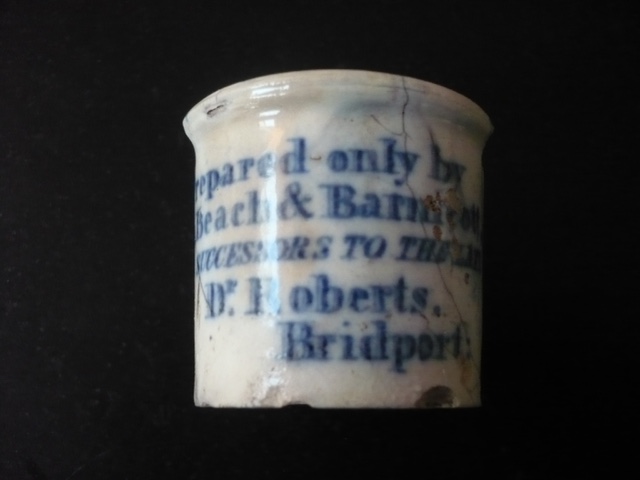
Turn out your Pockets/Kindle the Flame Online community Exhibition Day 2
Here is the next fascinating peek into the family archive of one of Narberth’s residents as part of our online ‘Turn out your Pockets/Kindle the Flame’ exhibition.
Get involved by sending a picture and description of your object to [email protected]
‘The Schlesinger family were German Jews and were well educated and quite wealthy. My father Franz went to University and became an Engineer (in Germany a “Diplome Engineur” was the equivalent of a Chartered Engineer in the UK today). He spent much of his time inventing things and when I was going through his papers I discovered a patent. Although I am not sure what it was for, I know the family were very proud in his name.
During his time studying and working Franz became friendly with Heinz Kroch who was a Doctor of Chemistry. They decided that a move to the UK was necessary if they were to survive beyond Hitler’s regime and with the help of funding from Anna Kroch’s family Heinz set up a business manufacturing leather pigments and finishes in Eccles, Lancashire. The business quickly flourished and Franz then also moved to the UK to assist Heinz with maintenance and engineering.
My Dad, Franz had a sister, my dear Auntie Kitty, who was a librarian. She moved to the UK, to London, independently but for the same reasons.
My Mum, Gerda meanwhile had been born into a family of milliners in Upper Silesia (now Poland) and after her education worked in the family business to gain experience. Later she had a series of jobs in large shops (including a shop similar to Woolworths). Gerda also had a sister Hilda who, with her fiancé Henry Wahrburg escaped to Eccles as a staging post for their new life in New York.
The Schlesinger family archive yielded some interesting sketch books from the early 1900’s. There is an example below. The text reads:
Sketch for the Family Album. Grand Father Simon Schlesinger, born 1793 in Great Wartenberg, died 1869 in Breslau, was the son of Isaac Schlesinger from Buekeburg. His wife’s maiden name was Dura from Reichen Bach or from Staedtel. He was a cousin of Saloman Heine and of Lind Sau (??). His father was the founder of the well known bank Jaro & Landau, Berlin.
The next bit is less clear. I think it refers to Grandfather Schlesinger being badly wounded by a French Carabiner’.
–John Sleigh
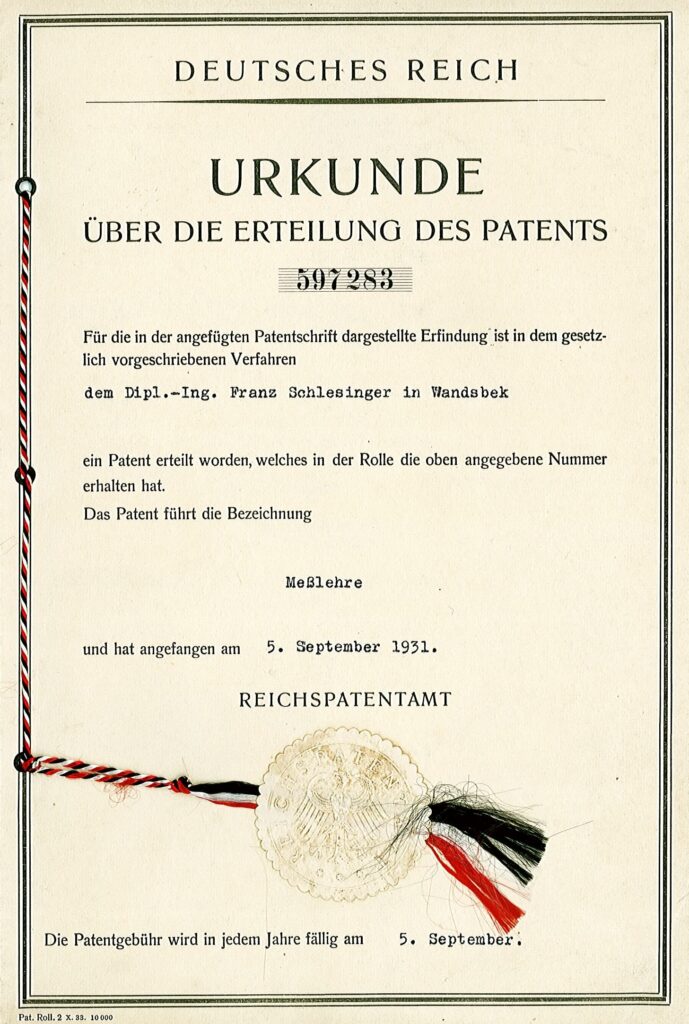
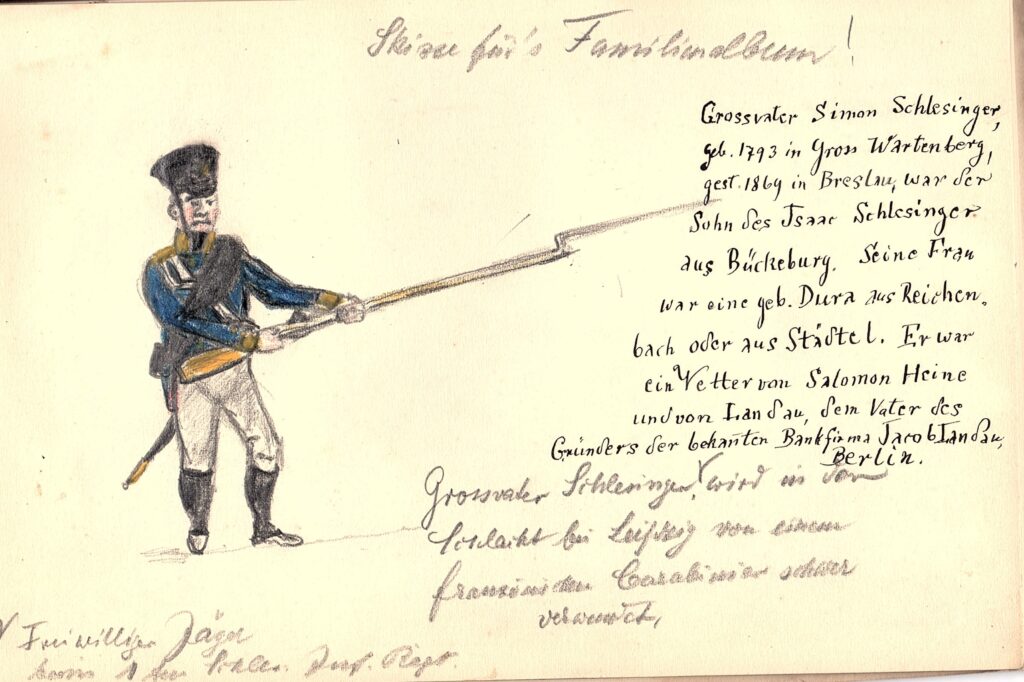
Turn out your Pockets/Kindle the Flame Online Community Exhibition Day 1
Here is the first incredible object for our ‘Turn out your Pockets/Kindle the Flame’ online community exhibition.
If you have a family story to share, please email [email protected]
‘Bransby Griffiths (1889-1972), my husband’s grandfather, was a Conscientious Objector in World War I. He lived in Briton Ferry, where the number of conscientious objectors amongst those eligible for conscription was one of the highest in the country.
His opposition to the War was based on his socialist beliefs. He was a member of the Independent Labour Party and the No Conscription Fellowship and when he refused to join up, policemen arrived at his home to arrest him. He was court-martialled and subsequently imprisoned in Wormwood Scrubs and Wandsworth.
While in prison, he collected the names and writings of his fellow ‘conchies’ in this autograph book which we still have along with the white feather he was given by someone who considered his actions those of a coward. He ended the war by walking home to Briton Ferry from Penderyn Labour Camp’.
–Pauline Griffiths
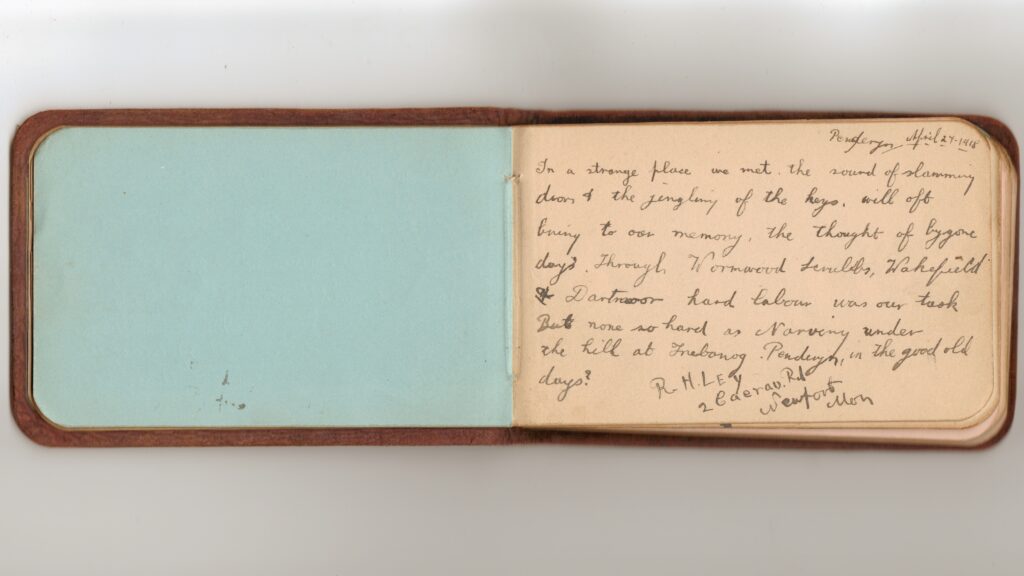
Coronavirus Update
As you may already have guessed, we are cancelling all events for March and April at Narberth Museum.This is for the safety of the public and our staff.
As the situation stands, we remain open (now is the perfect time to stock up on books), and will do so until Saturday 21st March. However, we are updating our online bookshop and will be available on 01834 860 500 after this date should you wish to order any books for delivery.
As a charity that receives no core funding, this situation is going to have a major impact on our organisation. We would be hugely grateful for any donations or book orders at this time.
You can donate here: https://www.narberthmuseum.co.uk/donate/
Thank you all for your continued support ❤️
POSTPONED Behind the Curtains: An Evening with West Wales Authors
On Thursday 16th April at 7.30pm we will be joined by three West Wales authors who will be reading from some of their recent novels, discussing the Family Saga genre (for both readers and writers) and answering any questions.
Judith Barrow has lived in Pembrokeshire for forty years and publishes short stories, plays, reviews and articles. She has won several poetry competitions and completed three children’s books.
She is a Creative Writing tutor for Pembrokeshire County Council and holds one-to-one creative writing workshops.
Thorne Moore says ‘I am usually considered a psychological crime writer – domestic Noir, if you will – although, as a subject, crime appeals to me only as a traumatic turn of events that shakes people’s lives, the consequence of earlier situations or a trigger of later ones’. Thorne lives in Pembrokeshire which formas the backdrop for much of her writing.
Alex Martin can mostly be found, scribbling or tapping away in her garden shed, indulging her passion for writing, as the wind and rain lash at her little refuge. Her latest book is a ghost story, The Rose Trail, a time slip novel which weaves between the present day and the English Civil War with a supernatural thread.
Tickets for this social evening are £5 (redeemable against the purchase of a book, by any of the three authors, from our shop). Refreshments will be available and booking is essential as spaces are limited.
POSTPONED Flower Folklore: A Talk by Terry John
Do you know your Prickly Saltwort from your Viper’s Bugloss?
For many centuries our native wildflowers have been a source of mystery and intrigue. Our ancestors believed that they not only had medicinal and nutritional value, but also contained subtle religious and mythological messages.
On Thursday 19th March at 7.30, Terry John will explore ‘Flower Folklore’ and uncover some ancient superstitions. Why not ‘bring on the spring’ with us and celebrate some of our most popular wildflowers and the mysteries they hold.
Tickets are £5 and refreshments will be available.

